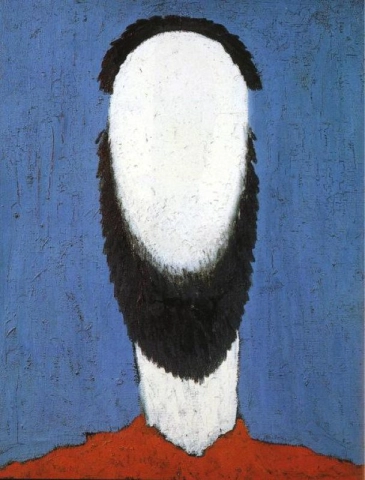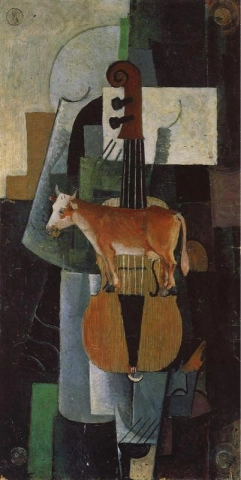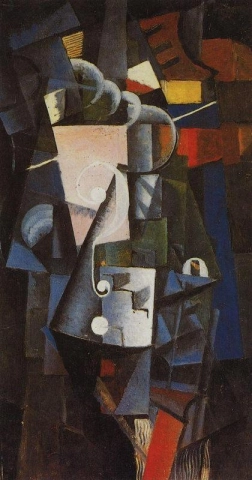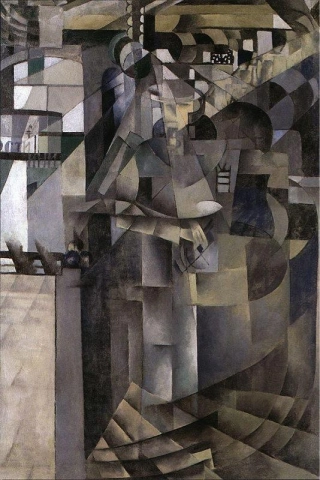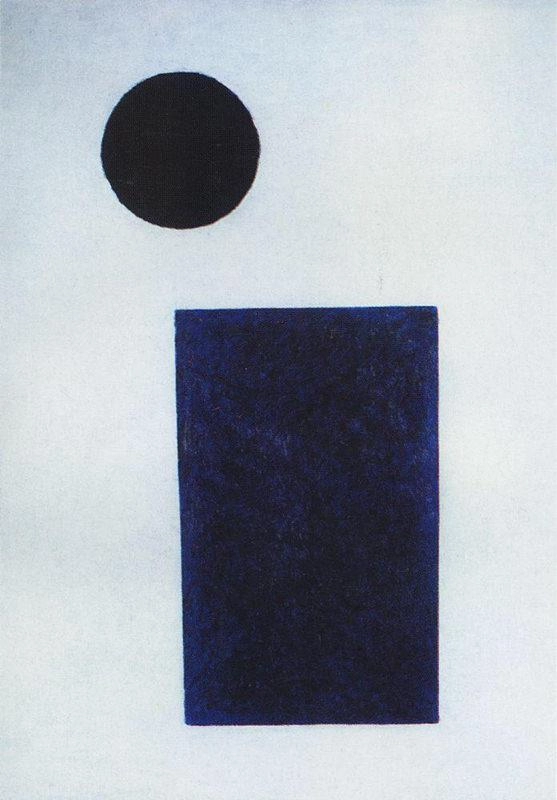

Hand painted reproductions of Kazimir Malevich
Kazimir Malevich: The Pioneer of Suprematism and Abstract Art
Kazimir Malevich (1879–1935) was a Russian painter and art theoretician who became one of the most influential figures in the development of abstract art. His revolutionary work led to the founding of Suprematism, a movement that emphasized pure geometric forms and rejected any connection to representational art. Malevich's art broke free from traditional constraints, ushering in a new era of abstraction that would profoundly impact modern art movements.
Early Life and Education
Kazimir Malevich was born on February 23, 1879, in Kiev, Ukraine, then part of the Russian Empire. He came from a family of Polish descent, and his early education focused on subjects like math and literature. However, Malevich's passion for art emerged in his teenage years, and he decided to pursue an artistic career.
He studied at various art institutions, including the Kiev School of Art and later the Moscow School of Painting, Sculpture, and Architecture. During his early years as an artist, Malevich was exposed to a wide range of artistic styles, including Impressionism, Post-Impressionism, and the emerging Russian avant-garde movement. His exposure to these styles would later influence his approach to abstraction and geometric forms.
Artistic Development and Style
Kazimir Malevich is best known for developing Suprematism, an abstract art movement that sought to transcend traditional painting by reducing art to its most basic forms—simple shapes, colors, and compositions. Suprematism's focus was on pure feeling and spiritual expression, abandoning representation of the physical world. Malevich's iconic work Black Square (1915) became the defining symbol of this movement. The painting featured a black square set against a white background, representing the ultimate reduction of form and an attempt to express art's spiritual and emotional core without relying on imagery or subject matter.
Malevich’s style evolved over time, beginning with figurative work influenced by Symbolism and Impressionism. His early paintings often depicted traditional subjects such as portraits, still lifes, and landscapes. However, as he immersed himself in the avant-garde movements of Russia and Europe, he began to embrace abstraction and geometric forms.
By 1913, Malevich had abandoned the use of representational imagery entirely, and his works began to explore the concept of space and form in new ways. His paintings often featured bold geometric shapes like squares, rectangles, circles, and lines, using these elements to create compositions that suggested movement, rhythm, and energy. His famous Suprematist Composition: White on White (1918) showcased his mastery of color contrast and spatial relationships, using white as the dominant color to emphasize form and structure.
Themes and Significance
Malevich’s art was driven by his belief in the power of abstraction to express the inner, spiritual life of the artist. He rejected the notion that art needed to represent the visible world, instead focusing on the emotional and intellectual experience of the viewer. Suprematism sought to create an art that was free from the constraints of traditional representation and that could reflect the purity of human thought and feeling.
A key theme in Malevich's work was the idea of "zero form" or the pursuit of an art that was completely stripped of any external influences. For Malevich, the Black Square symbolized this ultimate abstraction, where the painting itself became a statement about the possibility of transcending reality through pure artistic expression.
Malevich's influence extended beyond visual art into architecture, design, and even philosophy. His ideas about geometric abstraction and the power of simplicity resonated with other avant-garde movements, including Constructivism, and influenced a wide range of artists, architects, and designers. His theories were outlined in his writings, where he argued that art should be freed from the constraints of the material world and focused solely on the spiritual expression of form and color.
Achievements and Influence
Kazimir Malevich’s work had a profound impact on the development of modern art. His creation of Suprematism marked a pivotal moment in the history of abstract art, paving the way for future artists to explore abstraction in all its forms. Malevich’s rejection of representation and focus on geometric purity influenced the Bauhaus movement, Constructivism, and Abstract Expressionism, among others.
Despite his groundbreaking contributions, Malevich faced significant opposition to his ideas, particularly in the later years of his life, when the rise of Stalinism in the Soviet Union led to the rejection of many avant-garde movements. Malevich was even forced to abandon his abstract style in favor of more traditional Soviet realist work. However, his work gained posthumous recognition, and today, he is celebrated as one of the leading figures in the history of modern art.
Malevich's works were exhibited widely during his lifetime, and his legacy is still evident in major art institutions around the world. His paintings can be found in the collections of the State Russian Museum in St. Petersburg, the Tretyakov Gallery in Moscow, and many prestigious institutions globally.
Legacy
Kazimir Malevich’s legacy as the father of Suprematism and a pioneer of abstract art remains profound. His vision of art as a spiritual and intellectual pursuit has inspired generations of artists to push the boundaries of artistic expression. His groundbreaking work laid the foundation for much of the abstraction seen in modern and contemporary art.
Today, Malevich’s paintings continue to be highly regarded and are housed in major museums and private collections worldwide. His exploration of form, color, and space has had a lasting influence on both art theory and visual culture.
Where to Find Reproductions of Kazimir Malevich’s Art
For those wishing to experience the revolutionary impact of Kazimir Malevich's abstract works, high-quality oil painting reproductions are available. These reproductions offer art collectors and enthusiasts the chance to own a piece of art history, from the iconic Black Square to other masterworks of Suprematism, and bring Malevich’s radical approach to abstraction into the home or office.
Imagine owning an original-style painting by one of the greatest artists in history. At POD, we offer you the chance to make this dream a reality. Each canvas is faithfully reproduced down to the smallest detail, allowing you to experience the beauty of the artist’s vision in your own home.
Our reproductions are crafted by experienced painters using the finest materials and time-honored methods. We are committed to delivering works of exceptional quality that will inspire and bring joy to your family for generations to come.

